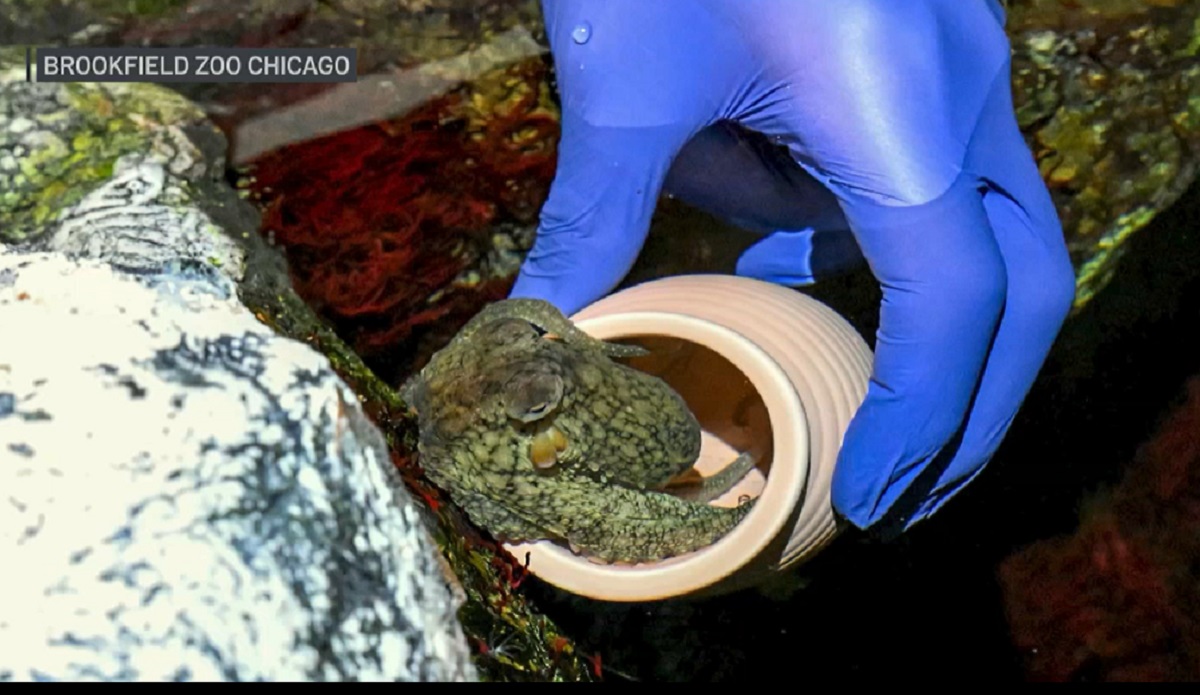According to the National Hurricane Center’s Live Hurricane Tracker, Milton is set to make landfall on the west coast of Florida Wednesday evening and overnight into Thursday. Though it rapidly intensified into a Category 5 storm Monday, it's expected to weaken as it hits the shore and barrel across the state, through major cities like Tampa and Orlando.
As of 5:30 a.m. Tuesday, Milton, in the Yucatan Peninsula near Cancun, was listed as a Category 4 storm. It was moving to the east at 12 miles-per-hour, with 155 mph winds, NBC Meteorologist Alicia Roman said.
According to NBC 5 Meteorologist Alicia Roman, Milton could re-intensify Tuesday -- once again becoming at Category 5 storm before weakening again -- as it slowly churns toward Florida's Big Bend region.
"The big question is, will it make landfall as a Category 4 or 3," Roman said, noting that models were going back and forth.
"Nonetheless, it will be a very destructive storm with a storm surge of up to 20 feet high," Roman said, of how high waves could get. "Think of a wall of water."
Once it hits Florida, Milton is expected to pass through the state and impact the eastern side around 1 p.m. Thursday, Roman said, though it was expected to be downgraded at that time even more, to a Category 1.
"Still just causing so much chaos and havoc across Florida's Big Bend area once again," Roman said, noting the area was just ravaged by Hurricane Helene.
Local
Hurricane Milton Tracker
Track Hurricane Milton live using the tracker below.
Feeling out of the loop? We'll catch you up on the Chicago news you need to know. Sign up for the weekly Chicago Catch-Up newsletter.
What makes Hurricane Milton ‘unusual'? How the rapidly changing storm is different
It's not uncommon for hurricanes to threaten the Florida coast in October, but the rapidly evolving Hurricane Milton is not quite the norm, experts say.
Milton is a bit atypical since it formed so far west and is expected to cross the entire southern Gulf, according to Daniel Brown, a hurricane specialist at the National Hurricane Center.
“It’s not uncommon to get a hurricane threat in October along the west coast of Florida, but forming all the way in the southwest Gulf and then striking Florida is a little bit more unusual,” Brown said. Most storms that form in October and hit Florida come from the Caribbean, not the southwestern Gulf, he said.
Milton "rapidly" intensified to a dangerous Category 5 storm in a matter of hours, threatening a dangerous storm surge in Tampa Bay and setting the stage for potential mass evacuations less than two weeks after a catastrophic Hurricane Helene swamped the coastline.
MORE: Hurricane Milton approaches limits of what Earth's atmosphere can produce
The increase from a Category 4 to a Category 5 happened just before 11 a.m. as Milton had maximum sustained winds of 160 mph, the National Hurricane Center said.
Adding to the unexpected elements is the location of where Milton could make landfall.
It’s the “black swan” worst case scenario that MIT meteorology professor Kerry Emanuel and other hurricane experts have worried about for years.
Part of it is that for some reason – experts say it’s mostly luck with a bit of geography – Tampa hasn’t been smacked with a major hurricane since the deadly 1921 hurricane that had 11 feet (3.3 meters) of storm surge that inundated downtown Tampa, though there wasn’t much to the city at the time, Emanuel said. Since then, a metropolis has grown and it’s full of people who think they’ve lived through big storms when they haven’t, he said.
“It’s a huge population. It’s very exposed, very inexperienced and that’s a losing proposition,” Emanuel, who has studied hurricanes for 40 years, said. “I always thought Tampa would be the city to worry about most.”
He said the whole basin is shaped and low-lying so it’s quite susceptible to flooding.
Hurricane Milton Path
As Hurricane Milton moves towards Florida, here's a look at its expected path and strength.
Timeline: When will the Hurricane hit Florida?
Tuesday
The storm was located along the Mexico coast Tuesday morning, with hurricane warnings still in effect as heavy rains continue.
Rain bands out in front of the hurricane were expected to begin stretching out toward the Florida coast, meaning that some showers and thunderstorms could begin impacting the state 36 hours or more before the storm officially makes landfall.
According to officials, Tampa International Airport will also halt operations beginning at 9 a.m. Tuesday due to the approaching storm.
By the evening hours Tuesday, the storm will be moving away from Mexico and toward the Florida coast, impacting western portions of Cuba as it churns across the Gulf as a powerful hurricane.
More rain will also start pushing into Florida out ahead of the hurricane, with flood watches and warnings likely as the day wears on.
Wednesday
By the late morning hours, tropical storm-force winds are expected to arrive across most of the state, with heavy rain also impacting a wide swath of the state from the panhandle all the way down to the Florida Keys.
Operations at Orlando International Airport are expected to be suspended Wednesday morning ahead of the hurricane’s arrival.
The storm is expected to weaken as it approaches the state, but will still be considered a major hurricane by the time it makes landfall, according to current estimates.
The storm is expected to make landfall around 1 a.m. It could do so near heavily populated areas of the state near Tampa and St. Petersburg, according to estimates.
There is a potential for a massive storm surge associated with the hurricane, between 10 to 15 feet as it enters Tampa Bay and similarly high in other nearby coastal areas, with an area between Yankeetown and Bonita Beach all potentially seeing massive rises in water levels.
Due to the heavy rainfall, there is considerable risk of flash flooding, as well as moderate-to-major river flooding in affected areas.
It is a virtual certainty that areas of central Florida will see tropical storm-force winds or greater as the storm passes through, according to modeling from the National Weather Service.
Even if the hurricane weakens into a Category 3 storm as it makes landfall, sustained winds between 110-to-130 miles per hour would still be possible in areas near the eye of the hurricane.
Thursday
By Thursday morning, the bulk of the storm is expected to have passed over the Florida peninsula, but it’s likely still going to be socking the area with rain, and could cause flooding issues along the Atlantic coast.
The heaviest rains are currently expected across the middle portions of the state.
In total, between 6-to-8 inches of rain or more could fall in most areas, though localized totals up to 15 inches are possible.
There is a “moderate” risk of flash flooding across most of the peninsula.



